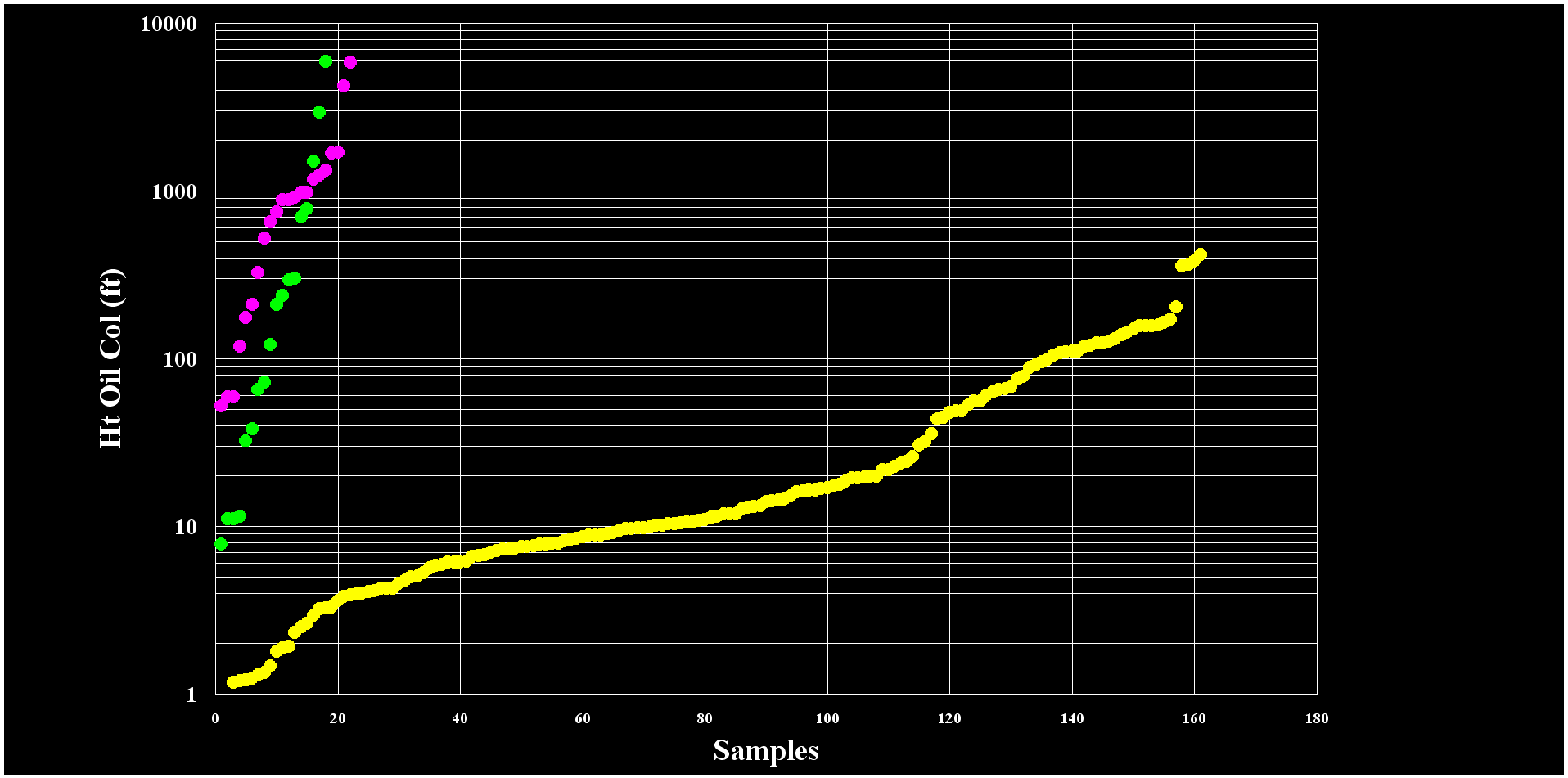
SEAL CAPACITY The following figure is a compilation of displacement pressures for shales (purple), sandstones (yellow), and carbonates (green). All data were derived from mercury capillary tests. The trapping capacity of different potential seals ranges from 0-10 ft of oil for good reservoir sands to as high as 8000 ft for good shales and tight carbonates. Column heights were calculated using a 35 API oil at near surface conditions with a density of 0.85 g/cm3, an interfacial tension of 21 dynes/cm and a brine density of 1.05 g/cm3. A good shale can trap more hydrocarbons than are available to charge a trap. Poor shales, from fluvial environments or highstand systems tracts, for example, are the real risk. Capillary properties affect both fault seals and top seals.
| ||
| ||
From Skerlec, G.M.,(2014) , Risking Fault Seal and Tops Seal, SEALS Course Manual, ęSeals International, 2014. See also Skerlec, G.M. (1999), Evaluating Top and Fault Seal, in Beaumont, E.A. and Foster, N.H. (eds.), Exploration for Oil and Gas Traps, Treatise of Petroleum Geology, Handbook of Petroleum Geology, American Association of Petroleum Geology). Data were compiled from Almon and Dawson, 2004, Dawson, Almon and Johansen, 2004, Boult, 1993; Krushin, 1993; Smith, 1966, Schowalter, 1979; Shea, et al., 1993; Sutton, et al., 2004, Vavra, et al., 1992; Thomas, et al., 1968; Wells and Amaefule, 1985; Melas, et al., 1992.
| ||
